While some business owners claim that organic traffic is a vanity metric and does not indicate how well a business is performing in terms of revenue, a high number of monthly visitors to a website is usually associated with bigger online success.
Generating web traffic is synonymous with generating leads in a lot of ways, and yet, despite this, it is also one of the biggest challenges businesses face – especially in more competitive niches.
In this article, we’ll be taking a look at:
- How to conduct audience and keyword research
- What is search intent and why it’s important
- How to build links and HARO mentions
- What makes good content that generates traffic for a long time
Without any further delay, let’s get into it.
Link building cheat sheet
10 Ways to Increase Organic Traffic
Before you can start actually generating traffic, you need to conduct two types of research: audience research and keyword research.
Without knowing who your audience is, and what kinds of questions they are asking, you are essentially pointing your finger at the sky and guessing – even if you think you have a decent idea of what your ideal customer is looking for.
And, as you know, guessing isn’t a particularly sustainable business strategy.
So, these processes occupy the first spots on our list.
Research Your Audience
Audience research is the process of investigating and analyzing a target audience in order to better understand their needs and preferences.
This information can then be used to create content and marketing initiatives that are more likely to resonate with the audience and generate traffic.
There are many types of data that can be revealed during audience research, such as:
-Demographics (age, gender, location, etc.)
-Psychographics (lifestyle, personality, values, etc.)
-Behavioral data (purchase history, web browsing history, etc.)
-Attitudinal data (opinions, perceptions, attitudes, etc.)
There are four types of audience research, all utilizing different research methods: primary, qualitative, quantitative, and secondary research.
Primary Research
Primary research is research that is collected firsthand, directly from sources.
This can be done through interviews, focus groups, surveys, and questionnaires.
An example of primary research would be if a company conducted a survey to collect customer feedback on a new product.
Qualitative Research
Qualitative research is research that is focused on understanding and interpreting human behavior.
This type of research is often used to understand people’s opinions, motivations, and feelings.
Qualitative research can be conducted through interviews, focus groups, and observation.
An example of qualitative research would be if a company conducted interviews with customers to understand their experience with a new product.
Quantitative Research
Quantitative research is research that is focused on collecting data and analyzing it to draw conclusions.
This type of research is often used to understand trends and relationships.
Quantitative research can be conducted through surveys, questionnaires, and social media analytics. An example of quantitative research would be if a company collected data on how many people used a new product in a month, and then analyzed that data to understand usage patterns.
Secondary Research
Secondary research is research that is collected from sources that have already been published.
This can include books, articles, websites, and other public sources.
Secondary research is often used to gain an overview of a topic or to support primary research.
An example of secondary research would be if a company looked at articles about a new product to understand customer reaction.
Using an Audience Research Tool
Manual audience research can take a lot of time and effort, and sometimes isn’t even an option on a large enough scale to provide actual, actionable information.
So, a great alternative is to use an audience research tool.
There are many of these tools available, but one good example is SparkToro.
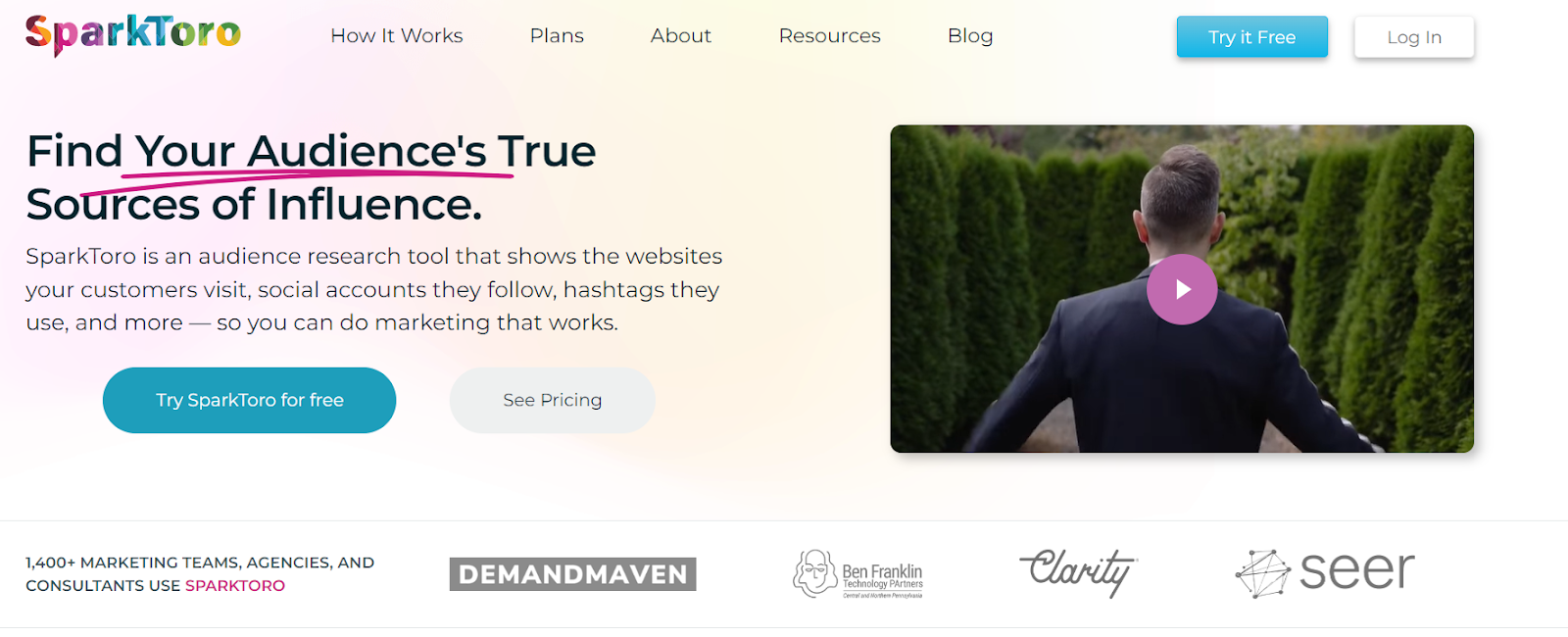
By running a simple search, SparkToro pulls a treasure trove of information about your audience: including their demographics, the types of content they prefer, social media profiles they follow, and dozens of other traits that are useful to know when building out your content marketing strategy.
Keyword Research
Keyword research is the process of finding and analyzing the keywords that people are using to search for content on the internet.
It is a crucial part of SEO (Search Engine Optimization) and is used to determine which keywords to target in order to get the most organic visitor traffic to your website.
Short-Tail vs Long-Tail Keywords
There are two types of keywords: short-tail and long-tail.
Short-tail keywords are keywords that are composed of one or two words.
They generally have more Google search volume and are more competitive than long-tail keywords.
The fact they have significantly higher search volume than long-tail keywords makes them considerably more difficult to rank for.

“SEO” is an example of a short-tail keyword – with an extremely high difficulty score of 97, and over 100k monthly search volume.
Long-tail keywords are keywords that are composed of three or more words.
They are much more specific, and, as a result, have a lot less search volume, and competition.
This makes them easier to rank for.

“How to increase organic traffic” is an example of a long-tail keyword (and also the keyword this very article is targeting).
As you can see, it only has 200 search volume, but a significantly smaller difficulty score, making it a ton more easier to actually rank for.
Long-tail keywords also typically include search intent modifiers, meaning that even though the search volume is several orders of magnitude less, the traffic generated through these keywords has much higher intent.
We will talk more about search intent in the next section, but for now, let’s take a look at how to discover and pick keywords to rank for.
How to Find Keywords?
There are several keyword tracking tools available. Three of the most popular ones include Ahrefs, SEMRush, and the Google Keyword Planner.
Personally, we use Ahrefs, so we’ll be talking about its Keyword Explorer here.
It can both provide you with an overview of your selected parent keyword as well as give dozens of relevant keyword suggestions.
Just log in to your Ahrefs account, click over to the Keyword Explorer tab, and type in your target keyword.
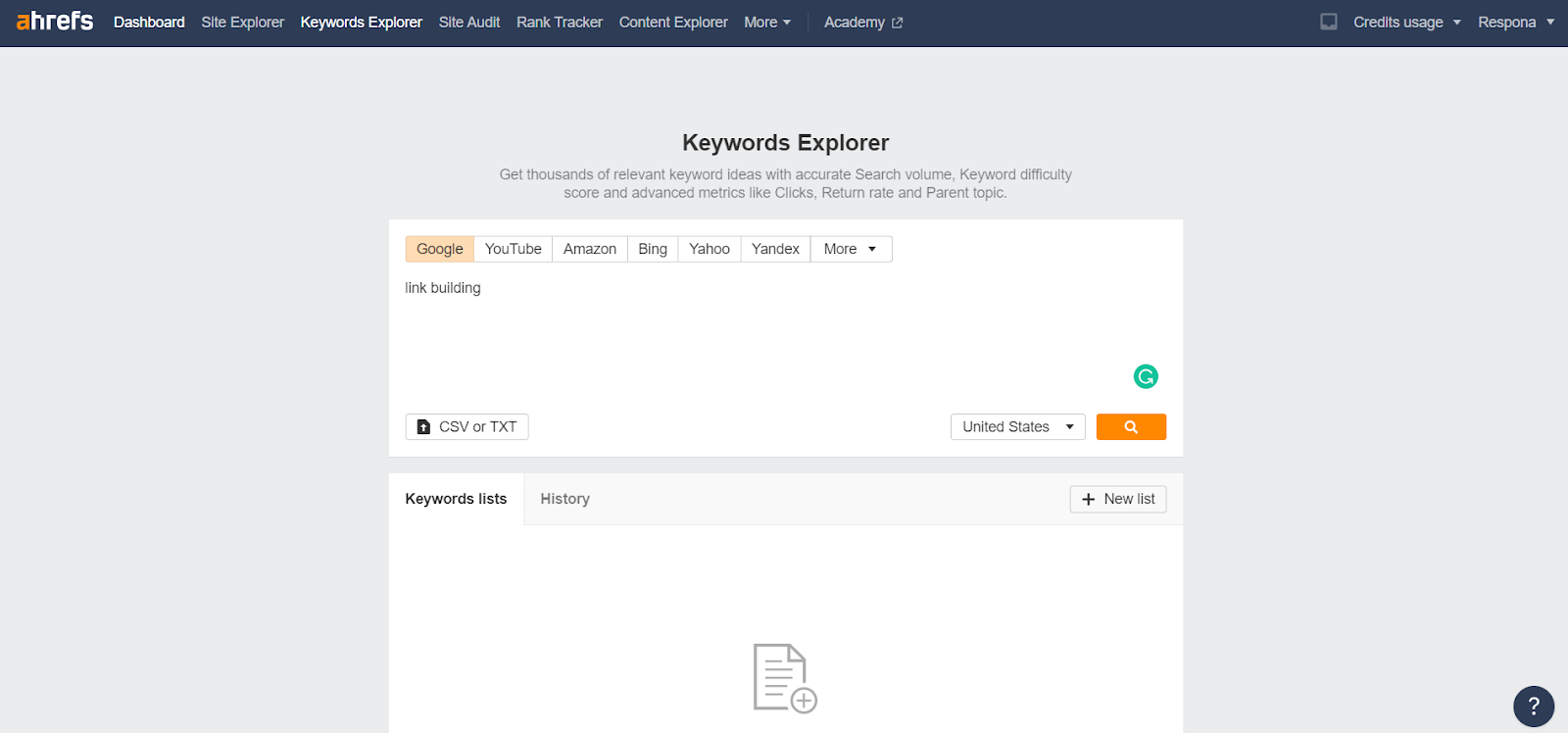
After you click “Search” you will be greeted with an overview of your keyword with four metrics:
- Keyword Difficulty (an estimate of how hard it will be to rank for that keyword)
- U.S. search volume
- Traffic potential (how much traffic the #1 ranking page for that keyword is getting)
- Global search volume
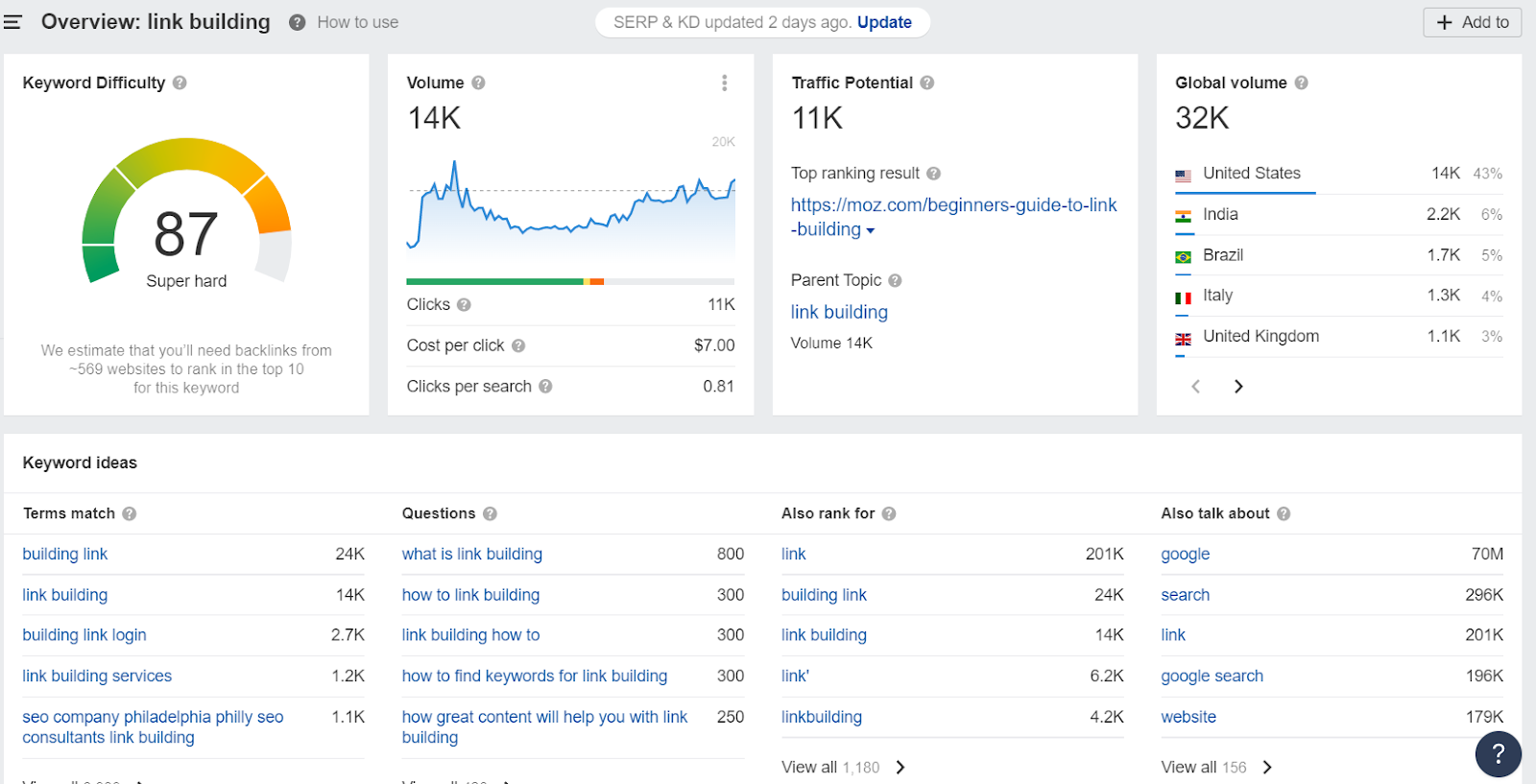
There will also be some keyword ideas at the bottom, but you can get much more keyword ideas by clicking over to “search suggestions”.
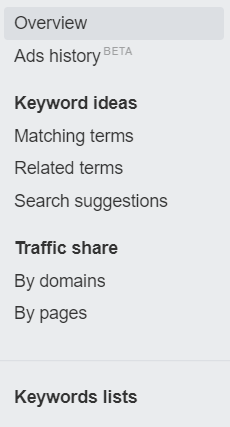
For example, Ahrefs pulls 185 keyword suggestions for “link building”.
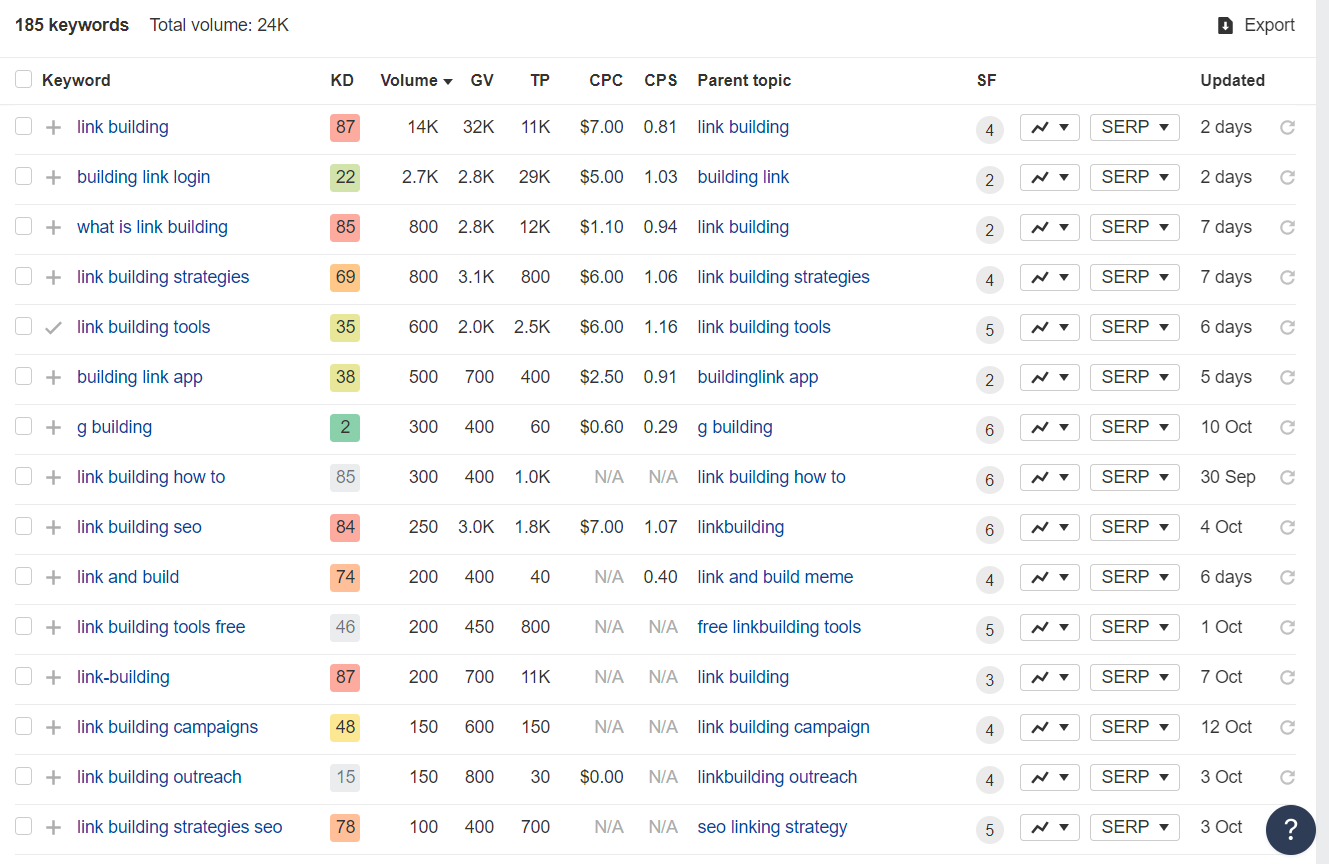
But with so many keywords to choose from, how do you know which ones to target?
Your ideal keywords are ones that have a low difficulty score but still bring in a large amount of traffic.
You can cherry pick keywords manually, but it can take a good chunk out of your day, and, again, it involves a lot of guesswork.
It’s better to use a systematic approach to both save time and pick out keywords more effectively.
Luckily, there exists a formula that allows you to quickly pick out prime keyword opportunities.
This formula is:
(1/difficulty) * traffic potential * (CPC+1) = Keyword Score
To use it, simply export your keyword suggestions from Ahrefs and open the sheet up in Excel or Google Sheets.
Then, create a custom column and apply this formula to all of your keywords.
The higher the keyword score you get using it, the better the keyword is to your overall strategy.
However, keep in mind that the formula only takes raw numbers into consideration, so you might end up with some keywords with an extremely high score but low actual relevance to your content.
The keyword score itself is also an arbitrary number, but it’s still a more efficient way to discover good keywords to target in a short period of time.
Now, let’s take a look at another piece of the keyword research puzzle: search intent.
Know Your Intent
Search intent is the purpose behind a user’s search. It is the reason why they are searching for something on the internet. There are four main types of search intent:
- Informational: The user is looking for information on a topic. They might be looking for definitions of a term, history of a topic, or how to do something.
- Navigational: The user is looking for a specific website or web page.
- Transactional: The user is looking to buy something or complete a task.
- Commercial: The user is looking for information to help them make a purchase decision.
Every type of search intent has its own search modifiers.
Search intent modifiers are words or phrases that people include in their search queries in order to narrow down the search engine results to what they are looking for.
For example, someone looking for a new car might include the word “compare” in their search query in order to find websites that allow them to compare different models.
The following are common search intent modifiers for each type of search intent.
- Informational: who, what, where, when, why, how
- Navigational: home, login, sign up, search, explore, find
- Transactional: buy, purchase, order, checkout, pay, shipping
- Commercial: sale, discounts, coupons, promo codes, best price, deals
Latest Google updates were aimed at better matching search results with users’ search intent, so in 2022, optimizing your content for appropriate search intent is as important as ever.
Proper intent optimization will help you secure higher positions in SERPs, and, as a result, generate more organic traffic.
Optimizing for Navigational Intent
The first step is to understand what navigational search intent is. This type of search intent is when a user is looking for a specific website or page. They may use a specific URL or brand name as their search query.
Once you understand what navigational search intent is, you can start optimizing your content for this type of search. Here are a few tips:
- Use the brand name or URL as the title tag, meta tags, and the content of your page. This will help your page show up when someone searches for that specific term.
- Use social media and other marketing channels to promote your page, ensuring increased visibility and potentially higher SERP positions.
Optimizing for Informational Intent
When optimizing content for informational search intent, it is important to ensure that the content is relevant, well-researched, and informative.
The title and meta description should accurately reflect the topic of the article, and the content should be structured in a way that is easy for readers to digest. This includes using headings and subheadings to further break up the text into readable sections.
Headings and subheadings can be used to break up the text, and images, videos, and infographics can be used to further illustrate the points being made.
Finally, the content should be edited for clarity and grammar, and any links included should be from reputable sources.
Additionally, it helps to run an extra round of keyword optimization with the help of an optimization tool if you have one in your tech stack or have the budget for.
One such tool we like to use in-house is MarketMuse. Just paste your target keyword and your text, and the software will suggest exactly which relevant keywords and how many times need to be included in the text for improved rankings (based on other results ranking for the same keyword).
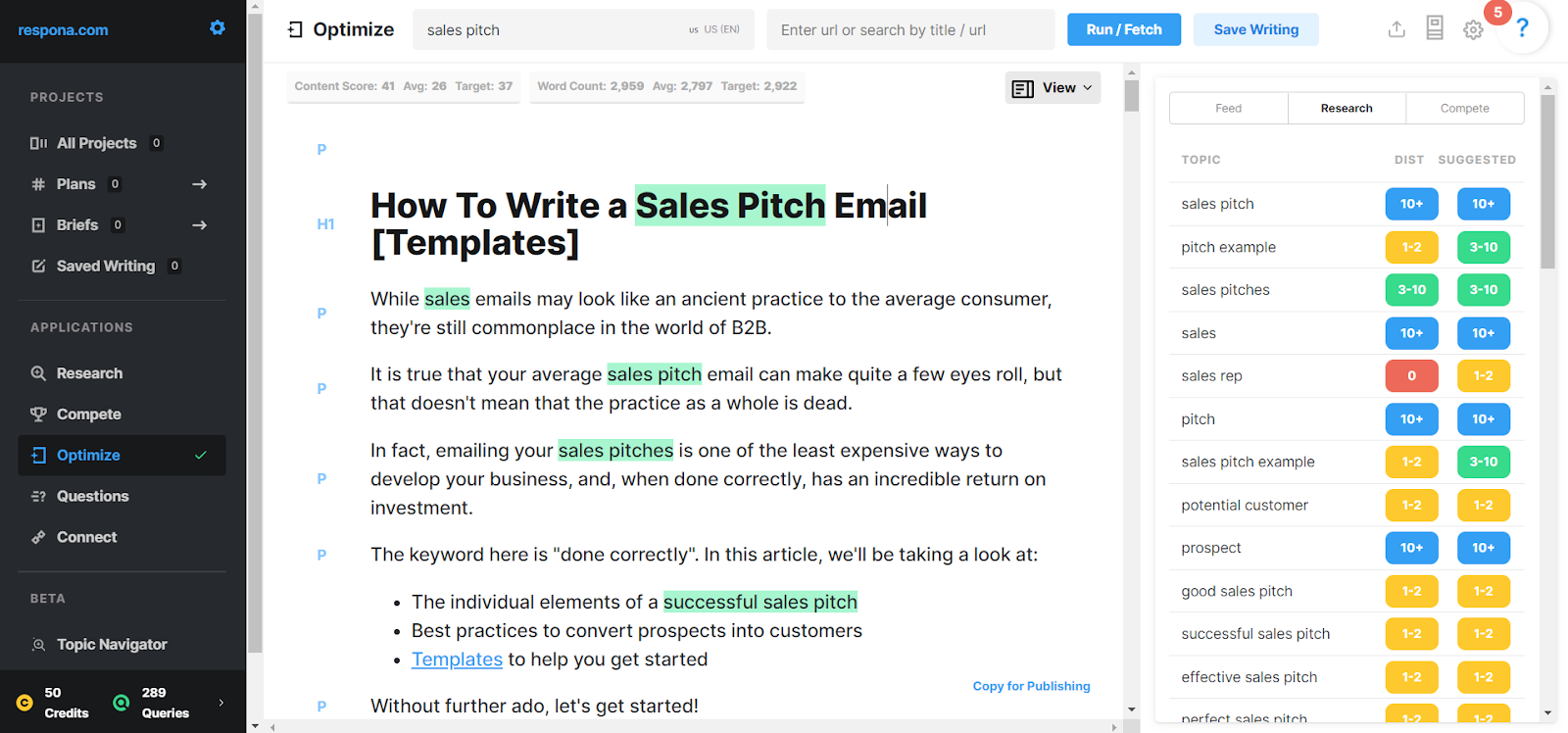
Optimize for Commercial Intent
There are a few key things to keep in mind when optimizing content for commercial search intent:
- Make sure your content is relevant to what your target audience is searching for. This means using keyword research to determine which keywords and phrases are being used most often by your target market.
- Use those keywords throughout your content, including in the title, headings, and throughout the body text.
- Write persuasive, compelling copy that speaks to the needs of your target audience.
- Include a strong call to action, telling your readers what you want them to do next.
- Promote your content through social media and other channels to reach as many people as possible.
Optimizing for Transactional Intent
Transactional search intent means the user is already ready to buy from you.
So, all you really have to do to optimize for transactional intent is to make sure it is easy for the user to get what they want from you.
Create User-Centric Content
Even if you absolutely nailed all aspects of SEO and customer/keyword research, you won’t see any rankings unless your content is top-notch as well.
There is no golden rule when it comes to creating content as all niches are different and some audiences prefer different types of content than others.
So, the biggest tip we can have here is to be as customer-centric as possible. Make user experience your top priority, and teach them about what they want to learn, as accurately as possible.
Time-Sensitive vs Evergreen Content
As the names suggest, time-sensitive content is anything that is only relevant for a short period of time, as opposed to evergreen, or timeless content.
Some examples of time-sensitive content are: Breaking news stories, recipes that are seasonally relevant, fashion trends and movie and book reviews.

Evergreen content, on the other hand, often takes the form of how-to guides, lists of resources, in-depth looks at topics, listicles, etc.
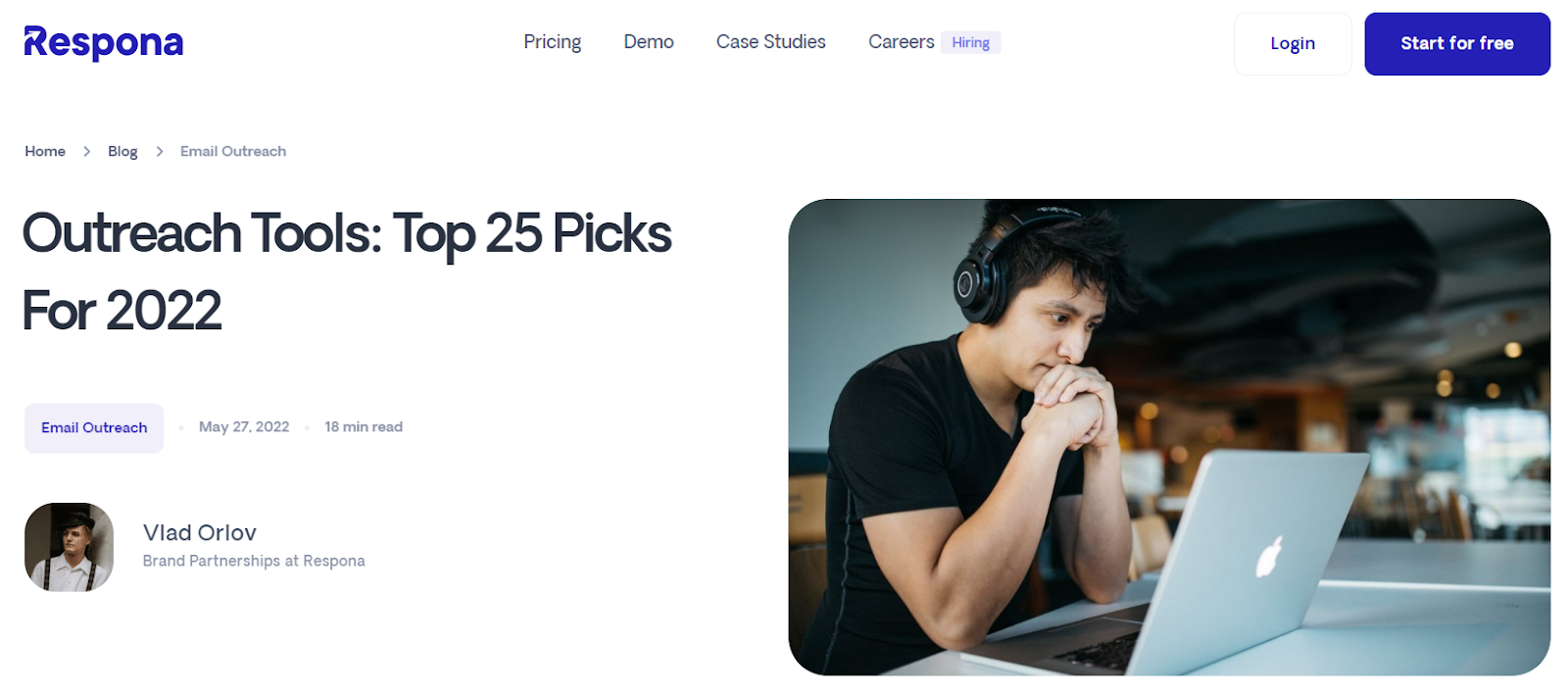
While covering a recent event in your niche is a nice way to get a little spike in traffic, people will lose interest in it comparably quickly, meaning that you have to focus your efforts on different topics.
There are many advantages to producing evergreen content, including:
- Evergreen content remains relevant and useful over time, so it can continue to attract traffic and generate leads long after it is published.
- Because it doesn’t go out of date, evergreen content can be a valuable asset for your business, providing a consistent source of traffic and leads. It is also easy to update and keep relevant
- Evergreen content can be a great way to build thought leadership and establish your brand as an authoritative source of information.
- Creating evergreen content can help you save time and effort in the long run, as you won’t need to update or republish it as often as other types of content.
- By its nature, evergreen content is more likely to be shared and linked to, which can help boost your SEO and drive more traffic to your site.
When working on your content strategy, you should try to include as many evergreen pieces in your content calendar as possible.
Tap Into Social Media/Influencer Marketing
It can be incredibly difficult to start gaining actual traction with just your website.
So, if it makes sense for your brand, it’s well worth the effort to establish a presence on social media.
The first step is to figure out which platform your target audience is most active on.
- Consider the type of content your target audience is interested in.
Different platforms are better suited for different types of content. For example, if your target audience is interested in visual content, they may be more active on platforms like Instagram or Pinterest.
- Look at where your competitors are most active.
If your competitors are active on a particular platform, it’s likely that your target audience is also active on that platform.
- Use social media listening tools.
Social media listening tools can help you track mentions of your brand or keywords across different social media platforms. This can give you insights into where your target audience is talking about you the most.
Some of the most popular social media listening tools include Sprout Social:
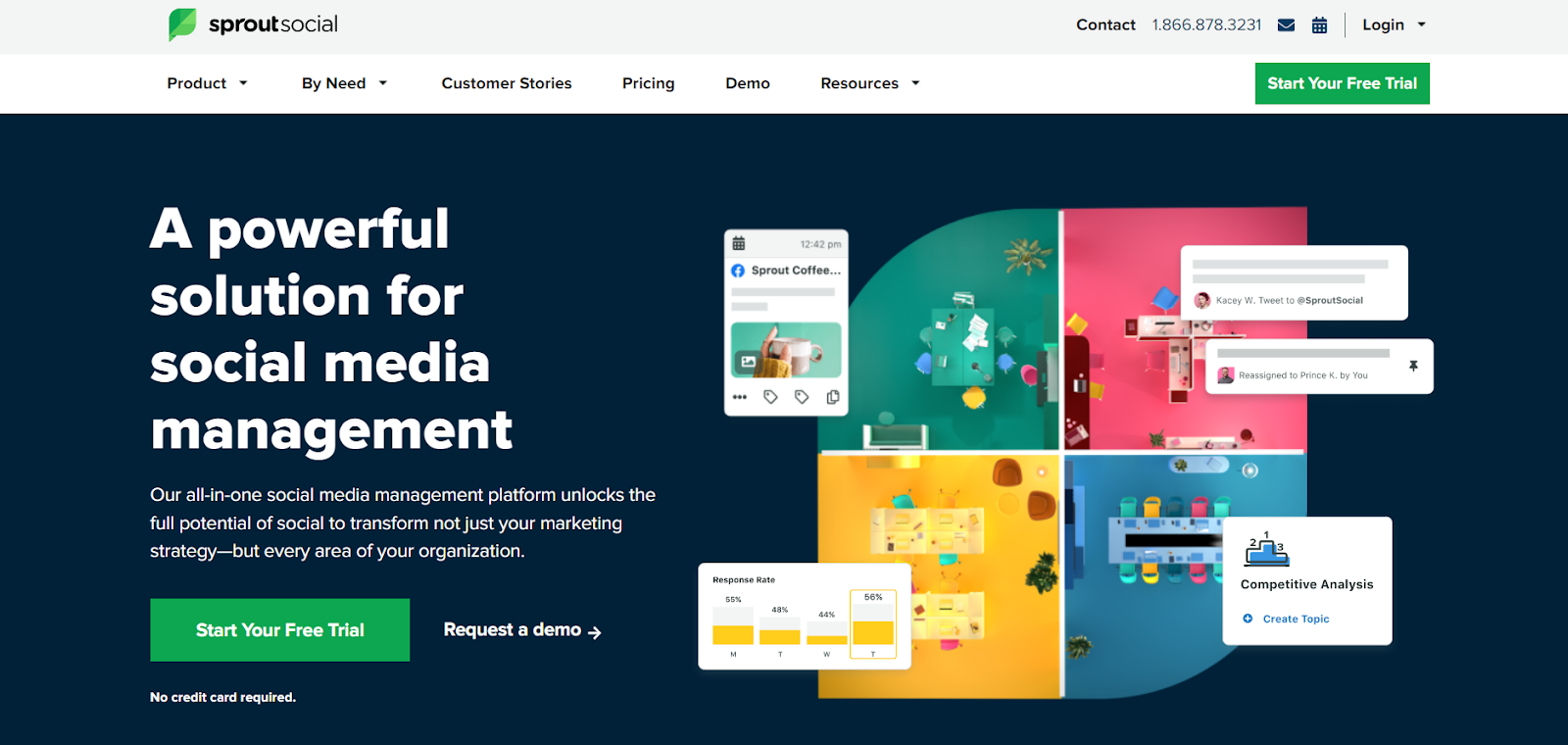
Hootsuite:
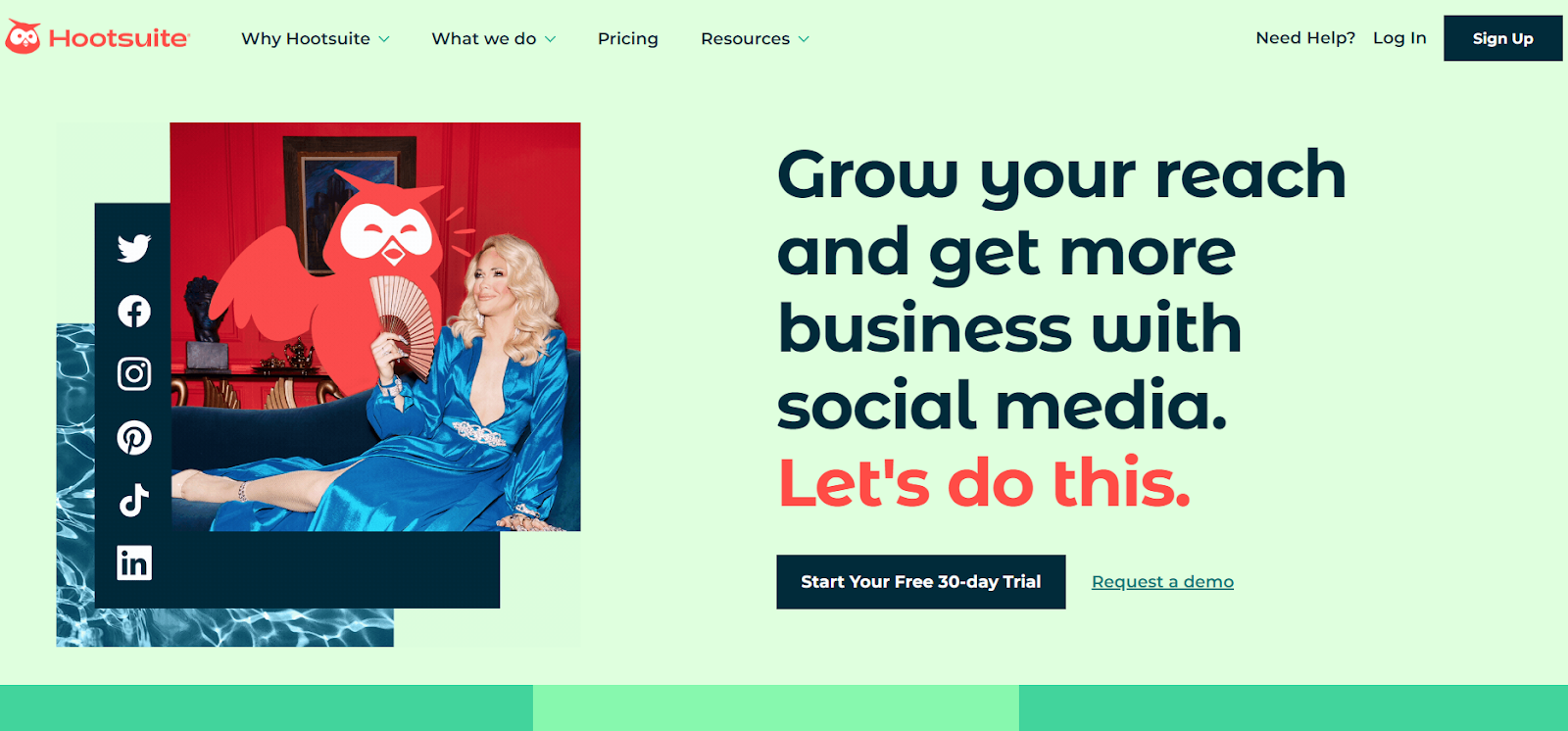
And BuzzSumo:
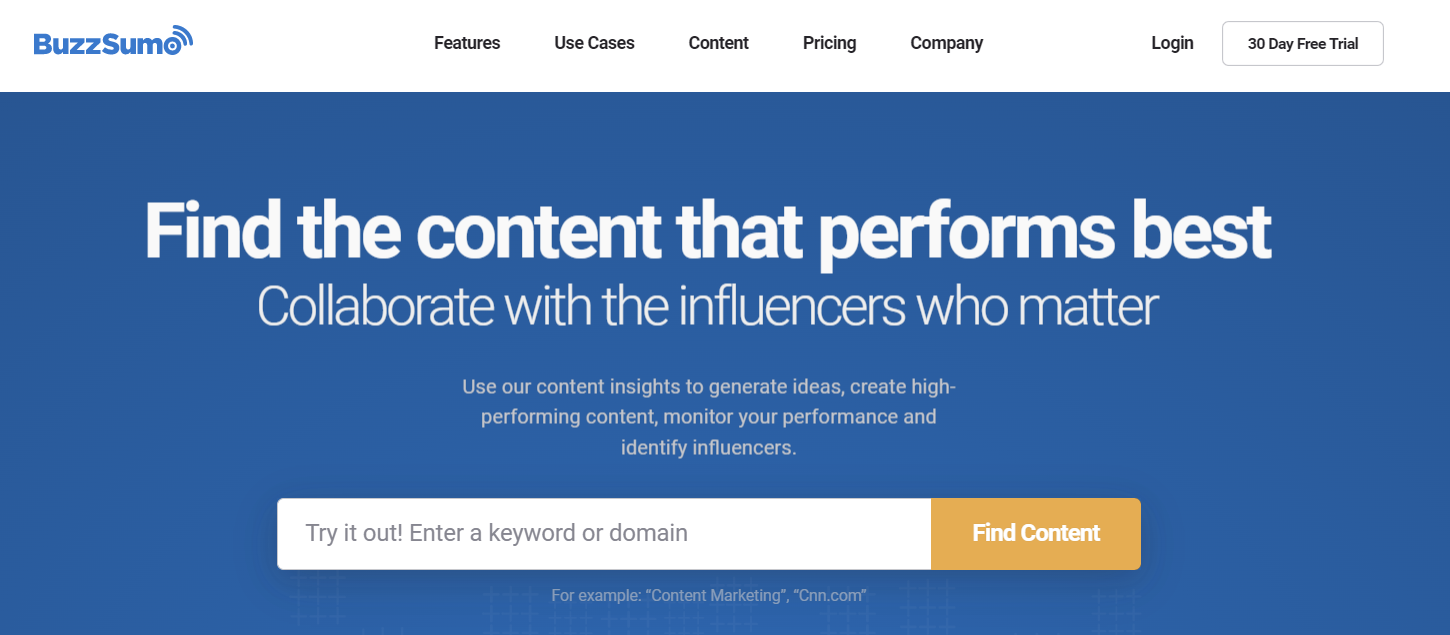
- Use demographic data.
If you have access to demographic data for your target audience, you can use this to narrow down which platforms they are most likely to be active on. For example, if your target audience is mostly female, they may be more active on platforms like Facebook and Instagram.
There are many different social media strategies that deserve an in-depth guide of their own, so in this section, we’ll just focus on the three most popular ones:
- Creating and sharing relevant content for your audience
- Running paid ads
- Influencer marketing
Create and Share Relevant Content
One common mistake that businesses make when running their social media groups is that they simply repost their blog posts on social media.
And while it’s a perfectly viable strategy to gain some extra clicks, there is so much more potential that you can tap into on social media, for example:
- Social media contests are a great way to generate traffic and engagement on your website or blog. By offering prizes or incentives, you can encourage users to share your contest with their followers and help promote your brand or product.
- User-generated content (UGC) is a powerful way to build trust and credibility with your audience. By featuring user-submitted photos, videos, or testimonials on your website or blog, you can show that your brand or product is popular and well-liked.
- Discussions and forums are another great way to get users engaged with your brand or product. By starting or participating in conversations on social media, you can show that you’re an expert in your field and build up a following of loyal fans.
Use Social Media To Build Relationships With Other Organizations
The first step is to identify which organizations you would like to build relationships with. Social media is a great way to research and find organizations that share similar values and goals.
Once you have identified a few organizations, reach out and introduce yourself. Be sure to explain how your organization can benefit from working together.
Once you have made initial contact, continue to nurture the relationship by staying in touch and sharing relevant information.
Social media is a great way to keep the lines of communication open. As the relationship grows, you can begin to explore ways to collaborate.
This could include joint projects, cross-promotion, or simply sharing resources.
By working together, you can achieve more than you could on your own, and tap into each other’s audiences.
Influencer Marketing
Influencers are a great way to generate traffic because they have already established an audience – and by collaborating with them you’re essentially tapping into their audience.
There are countless ways to use influencer marketing – from publishing a simple sponsored blog post to organizing reviews/giveaways to making the influencer a full-on ambassador for your brand.
However, if you’re a B2B brand, influencer marketing isn’t going to work out for you nearly as good as for B2C or eCommerce businesses.
Link Building
Technically, link building belongs in the Off-Page SEO section, but it’s such a comprehensive topic that we feel like it deserves at least a subsection of its own.
Despite numerous algorithm updates aimed to reduce “link spam”, or shady link building practices aimed to artificially improve page’s positions on search engines results pages and generate referral traffic (and, in some cases, direct traffic), backlinks from relevant, high domain authority websites still remain a huge ranking factor for all types of businesses (especially SaaS) in 2022.
We’re not going to go into step-by-step tutorials on how to execute individual link building strategies, as we have already covered them in much greater detail in separate guides – along with internal links.
But, what we are going to cover is the very foundation of link building: PageRank.
Essentially, PageRank is a score a page gets assigned by the Google algorithm depending on the number and quality of inbound links.
PageRank has been a major part of the algorithm ever since its inception in the 90ies, and is still being used by Google, although heavily modified.
Link building is mainly performed through cold email outreach (not to be confused with email marketing), and the three most popular strategies in 2022 are:
Link building also requires you to have content to actually build links to, so a great approach to link building would be to run a round of outreach every time you publish something on your blog.
HARO
HARO stands for Help A Reporter Out.
It’s an awesome service (that’s also absolutely free) that allows journalists, content writers, and publishers connect with industry experts to get quotes and interviews for their upcoming articles.
It’s a win-win situation: journalists receive industry insights from reputable sources, and these sources, in turn, get mentions on authoritative publications that also often include backlinks.
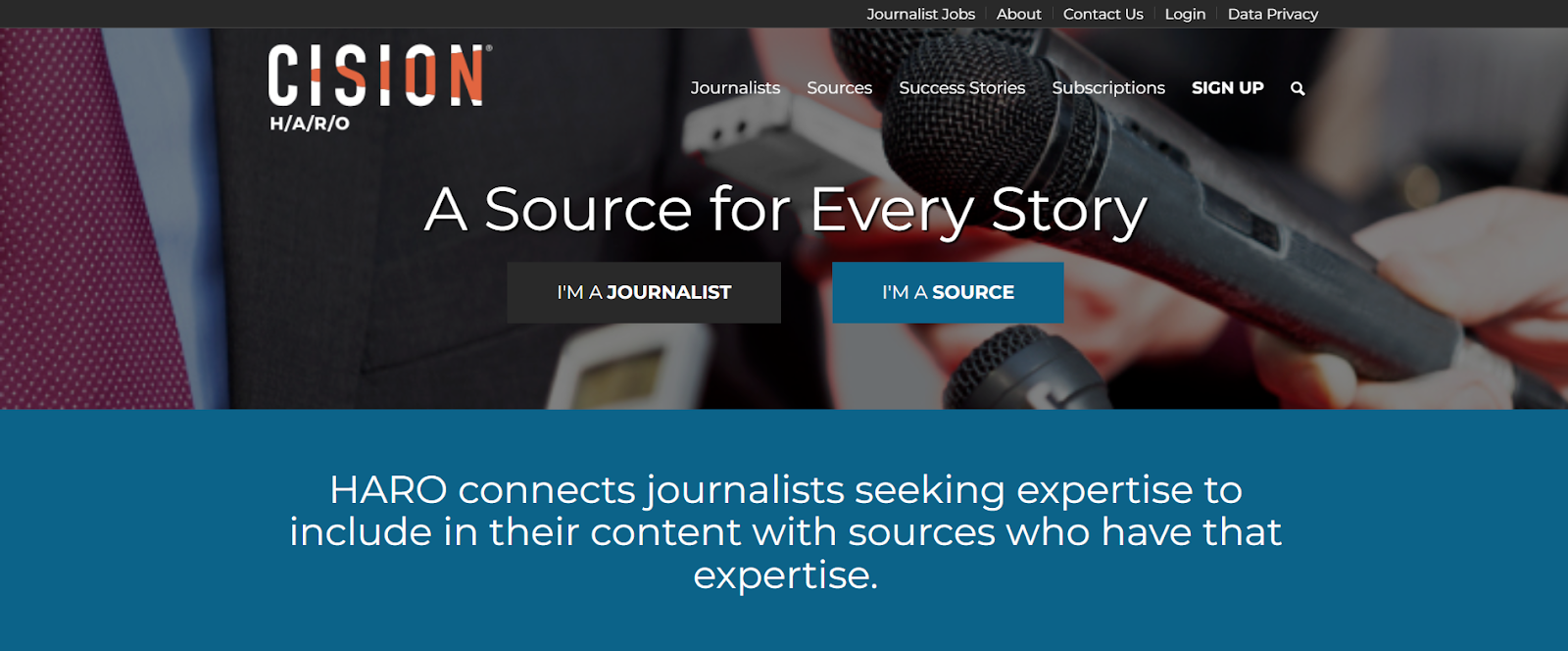
Registering as a source only takes a few minutes, and will get you subscribed to HARO’s daily emails containing countless queries for your chosen keywords.
Answering these queries is a great chance to get your name out there, start establishing yourself as a thought leader within your niche, and, of course, generate some valuable traffic.
Monitor Your Competitors
To stay ahead of the game, you need to be aware of what your competitors are doing as well.
This applies to both direct and indirect competitors.
Competitor research is a good way to both generate some ideas for your own organic SEO strategy (if something is working well for them, there is a chance it will work well for you as well if you’re able to replicate it), and figure out their strengths and weaknesses to take advantage of.
To conduct competitor research, you can start by searching for your competitors online and taking note of their website traffic and its sources, the types of content that work well for them, social media presence, and any other inbound marketing activity.
One great tool for competitor analysis is Ahrefs.
It can help you identify exactly which keywords are their “money”, which pages are generating the most traffic for them, and so on.
But most importantly, Ahrefs can help you identify your keyword gap.
To do that, navigate to Content Gap, and paste up to 3 of your competitors into the search fields.
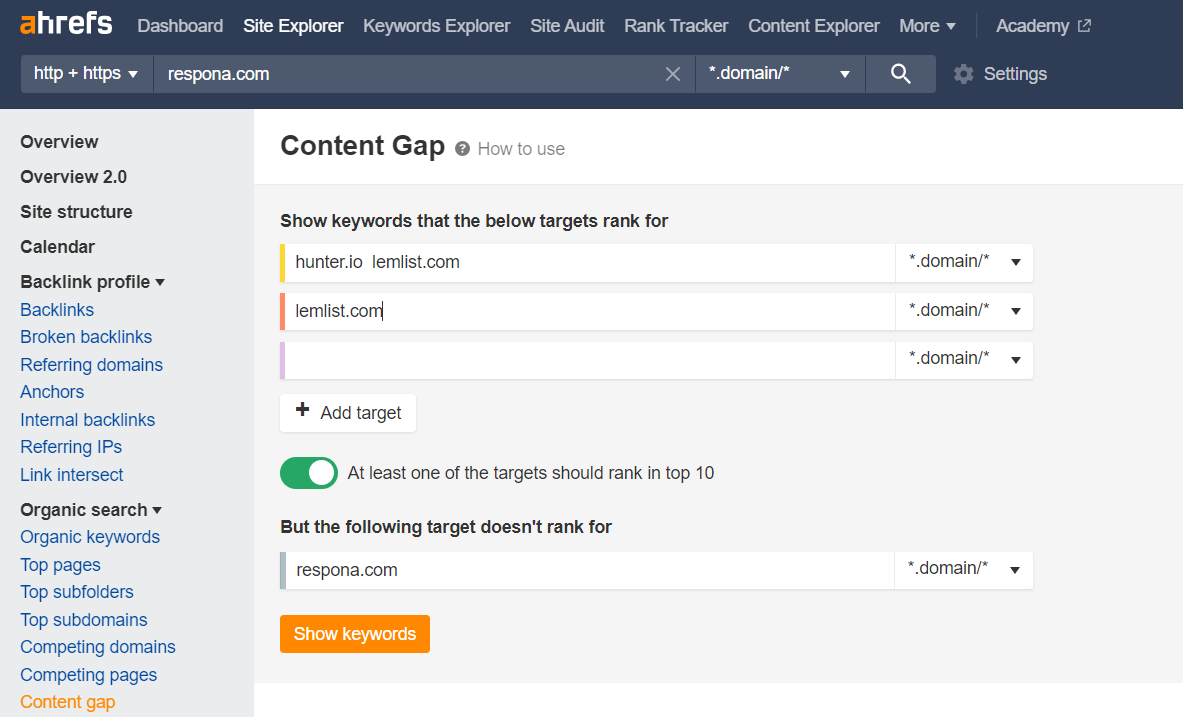
You will then be greeted with a list of all keywords that your competition is ranking for, but you are not.
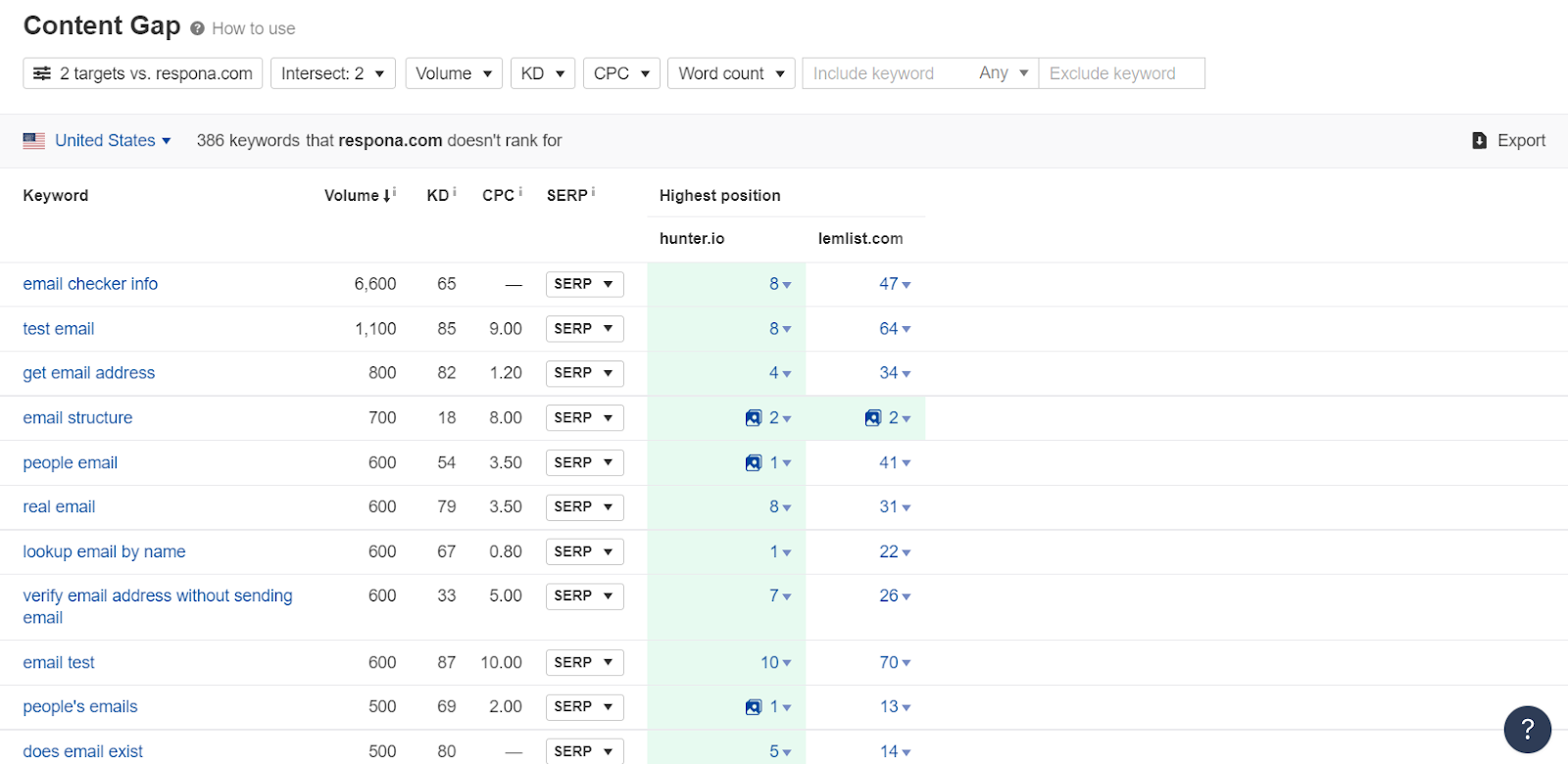
One of the best ways to generate more organic web traffic is to create content that is better than what your competitors are offering.
This means creating content that is more informative, insightful, or engaging than what is currently available.
This type of content is also referred to as Skyscraper content, or 10x content.
Ensure Top-Notch SEO (Off-page, On-page, and Technical)
We have already mentioned some of the most important aspects of search engine optimization: keyword research, high-quality content and link building, but there’s far more to a successful SEO strategy than that.
We’re not going to cover all aspects of SEO as we have only recently released a full-on guide covering most on-page, off-page and technical strategies, so we’ll only mention two other SEO factors that can have an immense impact on your rankings: mobile optimization and page speed.
Both of these can help you grab that sweet featured snippet – as long as your content answers the user’s question directly.
Mobile-first
The name of the game in 2022 SEO is usability.
And with so many users browsing the web on mobile, not optimizing your website for handheld devices does not only mean losing out on more than half of your organic traffic, but could prevent your website from appearing in organic search results whatsoever.
In fact, Google has switched to mobile-first indexing.
This means that crawler bots prioritize mobile versions of your content over desktop.
There are many strategies for optimizing your website for mobile. Here are some of the most effective:
- Ensure responsive web design.
This means that your website will automatically adjust to fit the screen size of the device it is being viewed on. This is the most effective way to ensure that your website looks great and is easy to use on any mobile device.
- Use a mobile-friendly theme.
If you are using a content management system such as WordPress, there are many mobile-friendly themes available. This will make your website look great on any mobile device from the get-go.
- Use optimized images.
This includes using smaller images or even activate lazy loading.
- Develop a separate mobile version.
If your website is simply too big or will take more effort to optimize for mobile than making a new one, developing a separate version for mobile devices can be a perfectly feasible solution.
PageSpeed
Mobile-first indexing does not mean you should completely abandon your desktop version, however.
A slow-loading website on any platform could prevent your pages from showing up high in organic search results.
Luckily, you don’t have to spend hours trying to figure out what can be optimized on your site.
PageSpeed Insights is a free tool by Google that gives you a quick but detailed overview of your website’s Core Web Vitals both on desktop and mobile, and even provides suggestions as to which elements need some work.
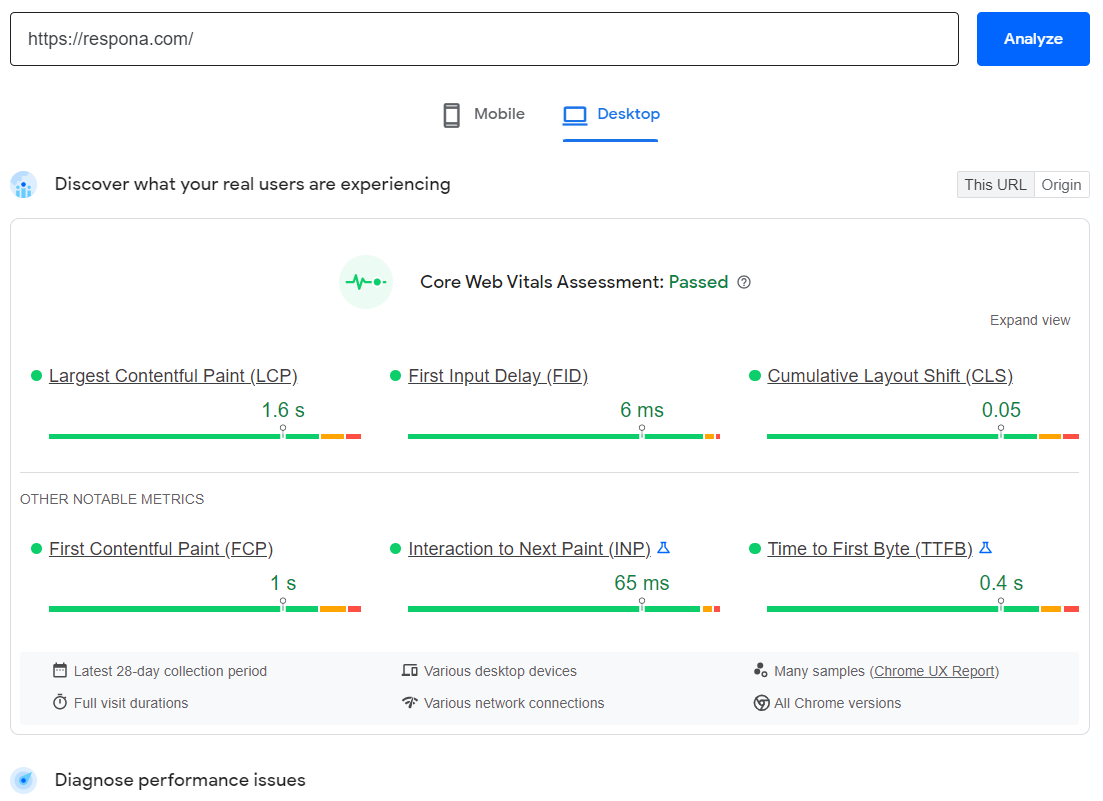
Monitor Your Results
There are a few key reasons for why constantly monitoring your results is the key to a successful organic traffic strategy.
The first reason is that it allows you to track your progress and see if your efforts are paying off. If you’re not seeing the results you want, you can quickly adjust your strategy.
The second reason is that it allows you to identify any potential problems early on and correct them before they cause too much damage.
Finally, it helps you to stay motivated and on track by seeing your successes.
One of the best tools for monitoring your growth is none other than Google Analytics along with the Google Search Console, providing detailed, page-by-page breakdowns of your organic traffic and its sources by location and even time of day.
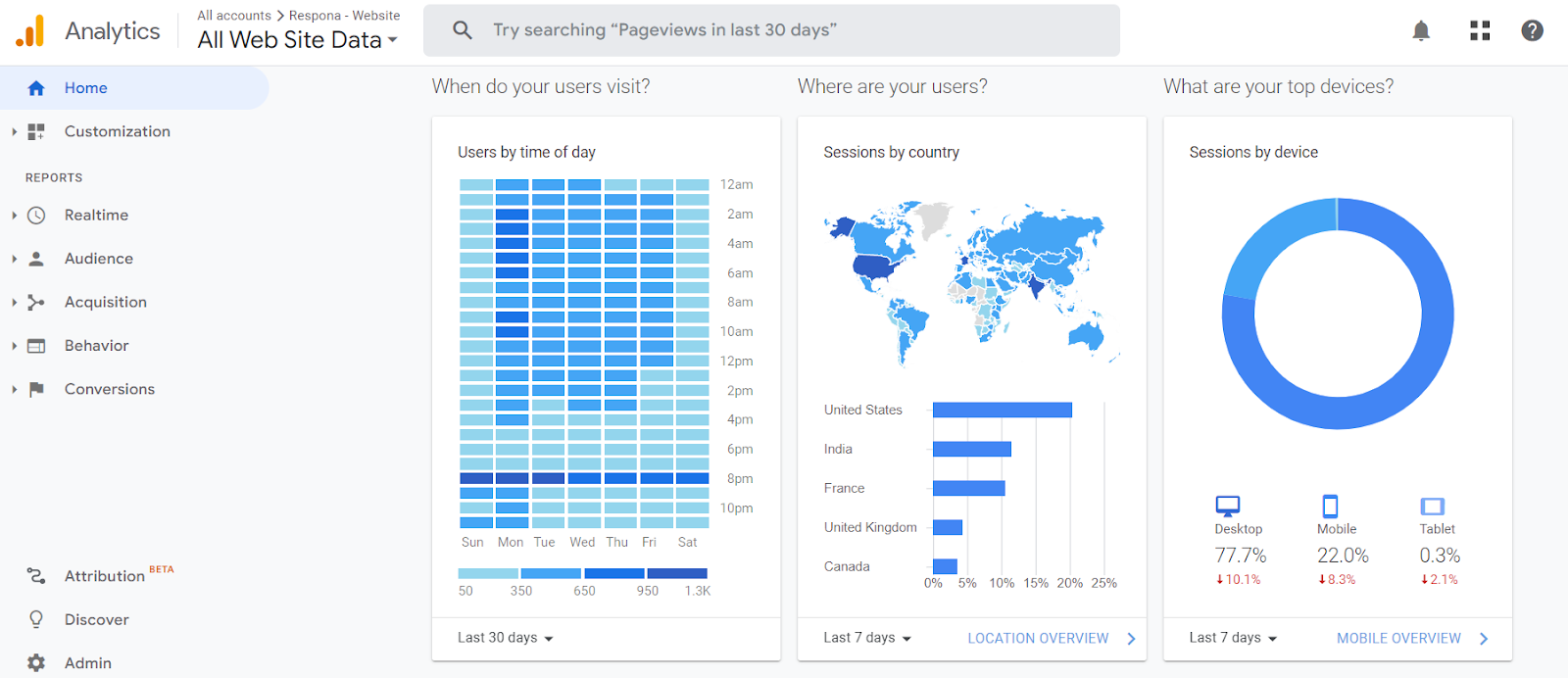
You should run an SEO audit at least once every few months to make more informed decisions for your organic SEO strategy.
Link building cheat sheet
Now Over To You
So, what is the best way to generate organic traffic for your business in 2022?
Of course, it is to thoroughly research your audience, figure out what type of content they are looking for on the Internet, and provide them with that content, while following all of the latest search engine optimization techniques as well as building links.
It is a massive undertaking and requires coordinated work between your content, digital marketing, and SEO teams.
Just link building alone requires you to have at least one dedicated team member doing it full time to start seeing results in a reasonable amount of time.
Need help building links? Feel free to start your 14-day free trial with Respona and see how we can streamline the entire backlink building process.
FAQ
What is the best way to increase organic traffic?
There is no single way to generate organic search traffic – it’s a multi-dimensional process that involves competitor research, regular production of great content, SEO optimization, social media marketing and digital PR efforts, and even advertising and influencer collaborations.
Do you need an advertising budget to generate traffic?
Google Ad advertisements are better suited for lead generation and can definitely help generate some traffic along the way, if you have the budget for it. However, running ad campaigns are far from necessary to generate substantial traffic.
Is link building obsolete in 2022?
Link building is still one of the most powerful SEO strategies, as long as it’ss carried out the “proper” way – by reaching out to bloggers and letting them know about your content and how featuring it can benefit them.
What are the best SEO tools for generating and monitoring traffic?
Ahrefs is one of the best tools for competitor research and backlink monitoring, MarketMuse is great to optimize your existing content for selected keywords, and Google Analytics is the go-to solution for tracking your own website’s progress and performance.
Can you generate traffic from social media?
Social media can generate a steady stream of valuable traffic, but it tends to work a lot better for B2C brands.






